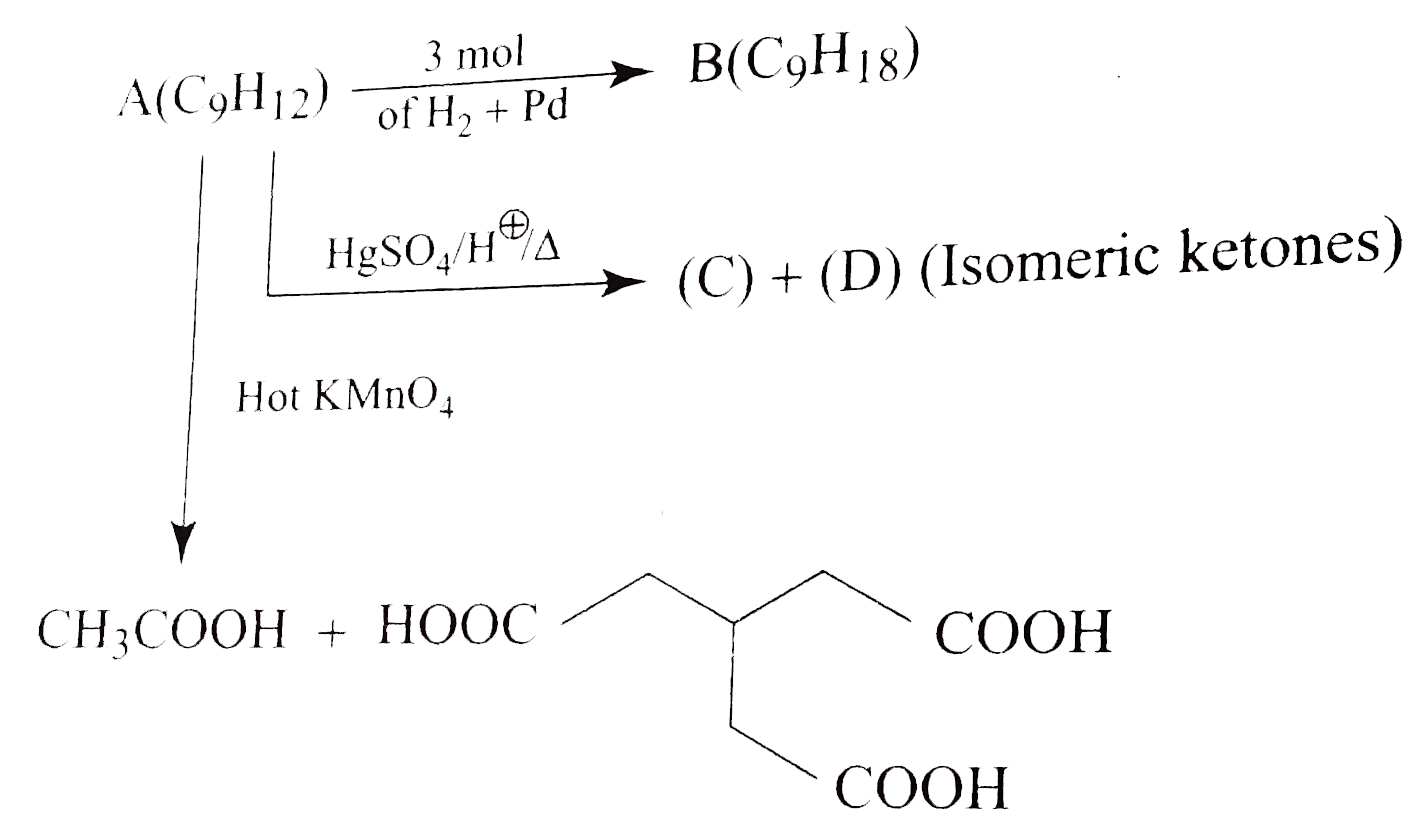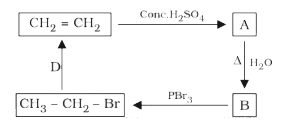Identify A to D.

Video Solution
Text Solution
DU in (A)=(2×9+2)−122=4∘
DU in (B)=(2×9+2)−182=1∘
1 DU in (B) suggests there is a ring in both (B) and (A).
Formation of two isomeric ketones (C and D) from A shows internal alkyne of the type R′−C≡C−R′, which requires at least four C atoms outside the ring. Total C atoms in (A)=9.
C atoms required for internal alkyne outside the ring =4.
Therefore, ring must be five membered (9−4=5).
4 DU in (A) can be accounted for: 1 DU (ring) + 2 DU (C≡C)+1DU for one (C≡C) which must be inside the ring.
Therefore, possible structures of A are:


From the oxidative cleavage of (I), (II), and (III), it is clear that the products of oxidation from (I) are same as given in the problem. So the structure of (A) is (I).
Reactions:

|
Topper's Solved these Questions
- ALKYNESBOOK - CENGAGE CHEMISTRY ENGLISHCHAPTER - ALKYNESEXERCISE - Exercises (Subjective Type)
31 Videos
- ALKYNESBOOK - CENGAGE CHEMISTRY ENGLISHCHAPTER - ALKYNESEXERCISE - Exercises (Linked Comprehension Type)
51 Videos
- ALKYNESBOOK - CENGAGE CHEMISTRY ENGLISHCHAPTER - ALKYNESEXERCISE - Exercises (Archives - Analytical and Desriptive Type)
4 Videos
- ALKENES AND ALKADIENESBOOK - CENGAGE CHEMISTRY ENGLISHCHAPTER - ALKENES AND ALKADIENESEXERCISE - Single correct Answer
14 Videos
- APPENDIX - INORGANIC VOLUME 1BOOK - CENGAGE CHEMISTRY ENGLISHCHAPTER - APPENDIX - INORGANIC VOLUME 1EXERCISE - chapter-7 Single correct answer
1 Videos
Similar Questions
Knowledge Check
Identify A, B, C and D in the given diagram of mRNA.
 AABCDMethylated cap Initiation codonTermination codonPoly A tailBABCDPoly A tail Termination codonInitiation codonMethylated capCABCDMethylated cap Non-coding regionCoding regionPoly A tailDABCDMethylated cap Coding region Non-coding region Poly A tail
AABCDMethylated cap Initiation codonTermination codonPoly A tailBABCDPoly A tail Termination codonInitiation codonMethylated capCABCDMethylated cap Non-coding regionCoding regionPoly A tailDABCDMethylated cap Coding region Non-coding region Poly A tail
Identify A, D, E and F in the diagram of an antibody molecule given below :

View Solution
Identify A, B, C, D
View Solution
Identify A, B, C, D, E
View Solution
Identify A, B, C, D, E, F,G
View Solution
Identify A, B, C, D in above cycle.
View SolutionIdentify A, B, C and D in given diagram

View SolutionIdentify A, B, C and D parts in this diagram of bacteriophage.

View Solution


